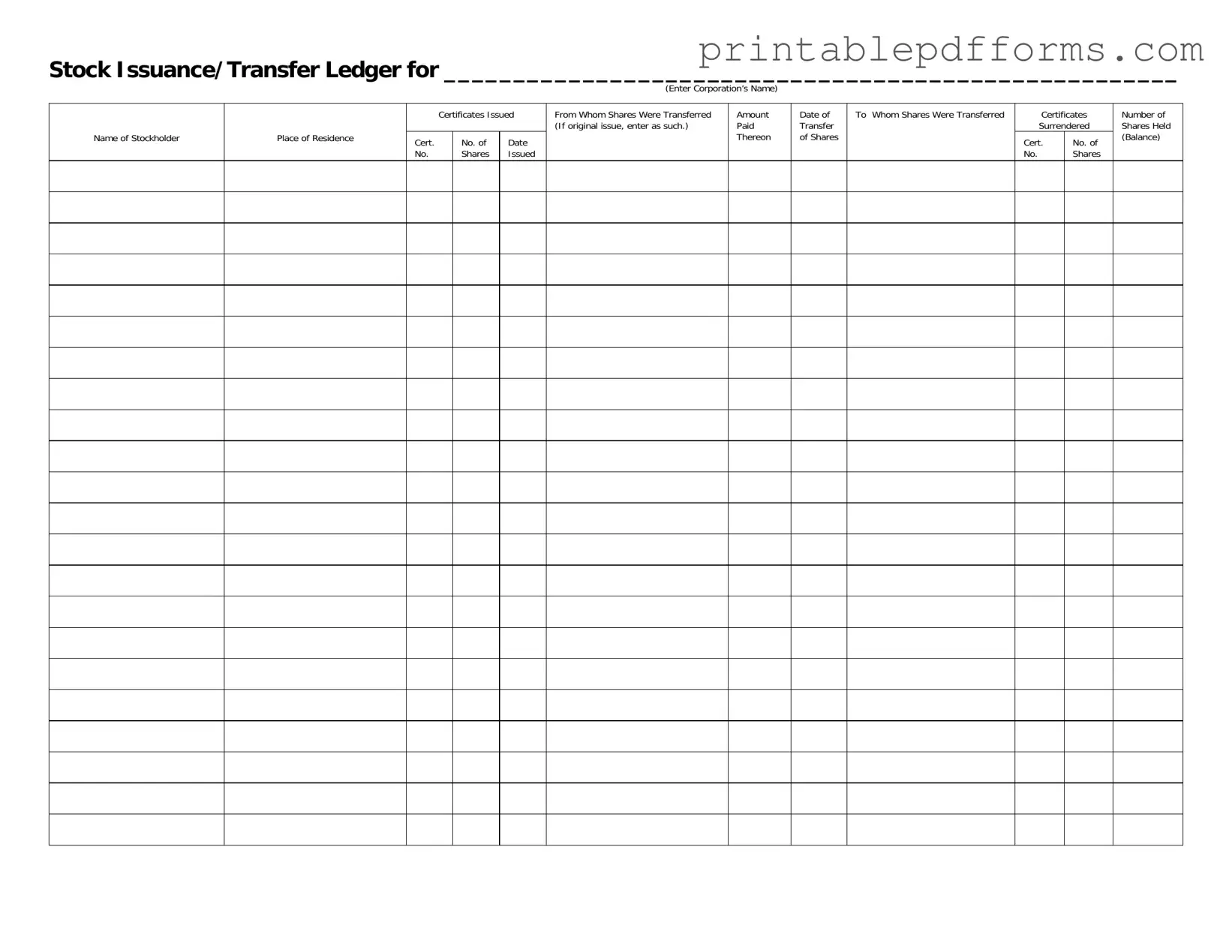Fill a Valid Stock Transfer Ledger Form
The Stock Transfer Ledger form serves as a vital record-keeping tool for corporations, documenting the issuance and transfer of stock among shareholders. This form captures essential details, including the names of stockholders, the certificates issued, and the dates of transactions, ensuring transparency and compliance in corporate governance. For those looking to manage their stock transfers effectively, filling out this form is crucial; click the button below to get started.
Create This Document Online

